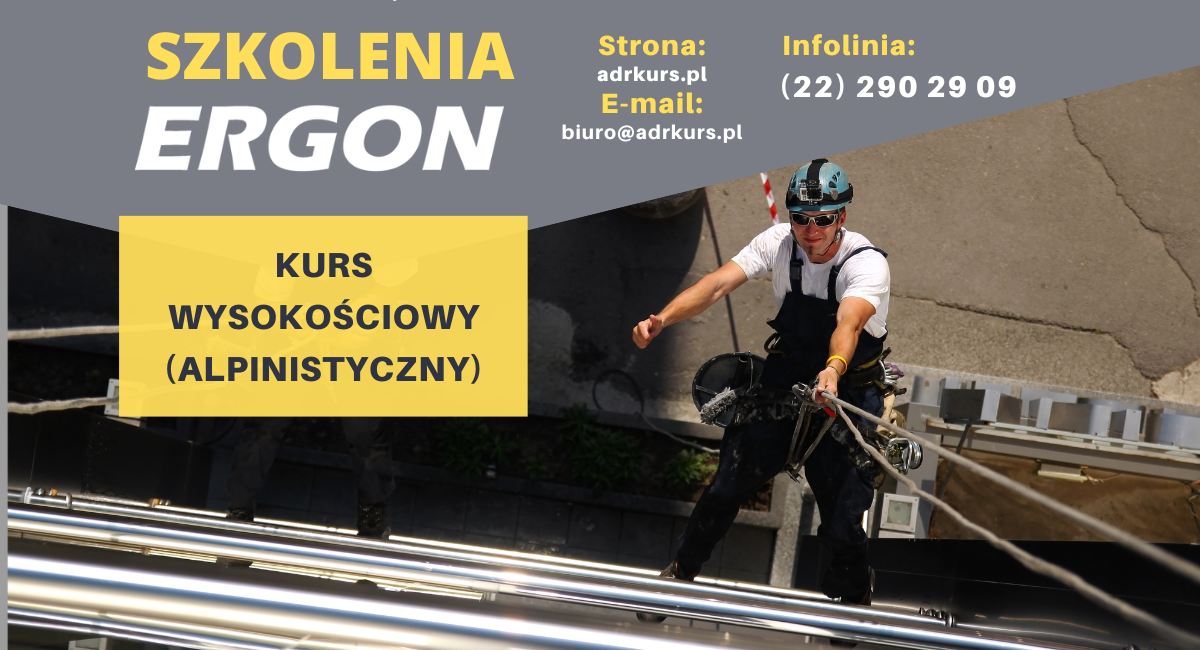Rope access techniques - training

Rope access course
Rope access techniques (system) is a personal fall protection system and a method of working at height. Low tension ropes attached to fixed or movable anchorage devices (points) are used as the main element of the safety system. For unsupported work, at least two ropes are used, a work rope - for descending, ascending protection - and a rescue rope - to ensure that the person remains in place in an emergency. These techniques make it much easier to carry out work at height.
Principles of work organization with the use of a rope access system
- Planning stage.
The execution of work at height starts at the planning stage. The duration and complexity of this process depends on the complexity of the task. In addition to solving technological, technical and organisational problems directly related to the execution of the work, a risk analysis is also carried out at this stage. It is essential in this regard to identify all existing harmful and hazardous factors, possible risks to workers, unauthorised persons and material assets. For each hazard, measures must be found to eliminate or reduce the risk. During the planning stage, a list is established of how to use fall protection equipment and other necessary protective equipment. Plans for evacuation and rescue from height are also drawn up. Once the planning is complete, the necessary documentation is drawn up.
- Preparatory work stage.
Then comes the preparatory work stage. It is essential to prevent people from entering the danger zone. Fences are installed for this purpose. It is often required to assign a worker to guard the danger zone. If there are any unstable fragile structures or objects that may fall over the work area, these must be removed or repaired. All other work carried out above and below workers using rope access systems and the work of hoists and other moving mechanisms must cease. Anchor ropes are fixed above the work area in most cases. Before installing anchoring devices, check the supports selected and ensure that they are intact. The rope access system and the fall arrest system must have separate anchoring devices. If the selected props are themselves at height, fall arrest equipment must also be used to access them.
- Fall protection measures
Special synthetic ropes with specific strength and dynamic properties are usually used as flexible ropes in rope access systems. The ropes are gently lowered into the work area. Locking knots are required at their ends to prevent the belay and descending devices from disconnecting. If the rope length is greater than the height difference, it is best to leave the excess coiled near the anchor rope attachment point - this can prevent dirt, damage or snagging on moving mechanisms. Ropes should be protected from contact with sharp edges. Before using the ropes, the worker must ensure that they are fixed and not being used by another worker. He or she must also inspect his or her fall protection equipment and carry out a functional check of belay devices, descending apparatus, clamps, etc. Only after all the preparatory steps have been completed and the safety measures implemented can the rope access system be used.

Mountaineering training
Working at heights using rope access techniques is a job that requires the right skills, knowledge and experience. Not every person is able to carry out such work. Only people with specialist qualifications are allowed to work in such a position. If you would like to gain qualifications, we invite you to take part in our training courses. You will find both basic and advanced courses on offer. The training is designed for people who want to learn how to carry out different types of work at height, as well as for employees who work at height and need to know how to use equipment and anchor points during their work. In order to take part in the course, participants must provide a declaration that there are no medical restrictions on working at a height of more than 3 metres, be of legal age and have completed at least a primary school education. Training courses include a theoretical part and a practical part.
| Type of classes | Description |
| Theory | During the theoretical classes, participants learn about occupational safety regulations, the characteristics of the equipment used to carry out work at height; the principles of workplace organisation and the organisation of worker protection during work at height; the structural and strength properties of the elements of buildings, structures and buildings on which work is carried out; the hazards that may occur during work, how to assess and eliminate or minimise them. Students also learn how to select appropriate personal protective equipment and how to use it correctly. |
| Practice | Practical classes include hands-on practice climbing a ladder with various types of safety equipment and carrying out a rescue procedure with various types of rescue equipment. The students also practice the various techniques that are used when working at height. |

About us
We provide safety, specialised equipment and an extensive training programme. We guarantee the acquisition of the necessary knowledge and skills. Classes at the training centre are conducted exclusively by certified instructors who have extensive experience in mountaineering. Training is practice-oriented, where the knowledge gained is applied during exercises. After completing the theoretical and practical parts of the course and passing the exam, trainees receive a certificate authorising them to work at height. We strongly encourage you to contact us and take part in our training courses.





































